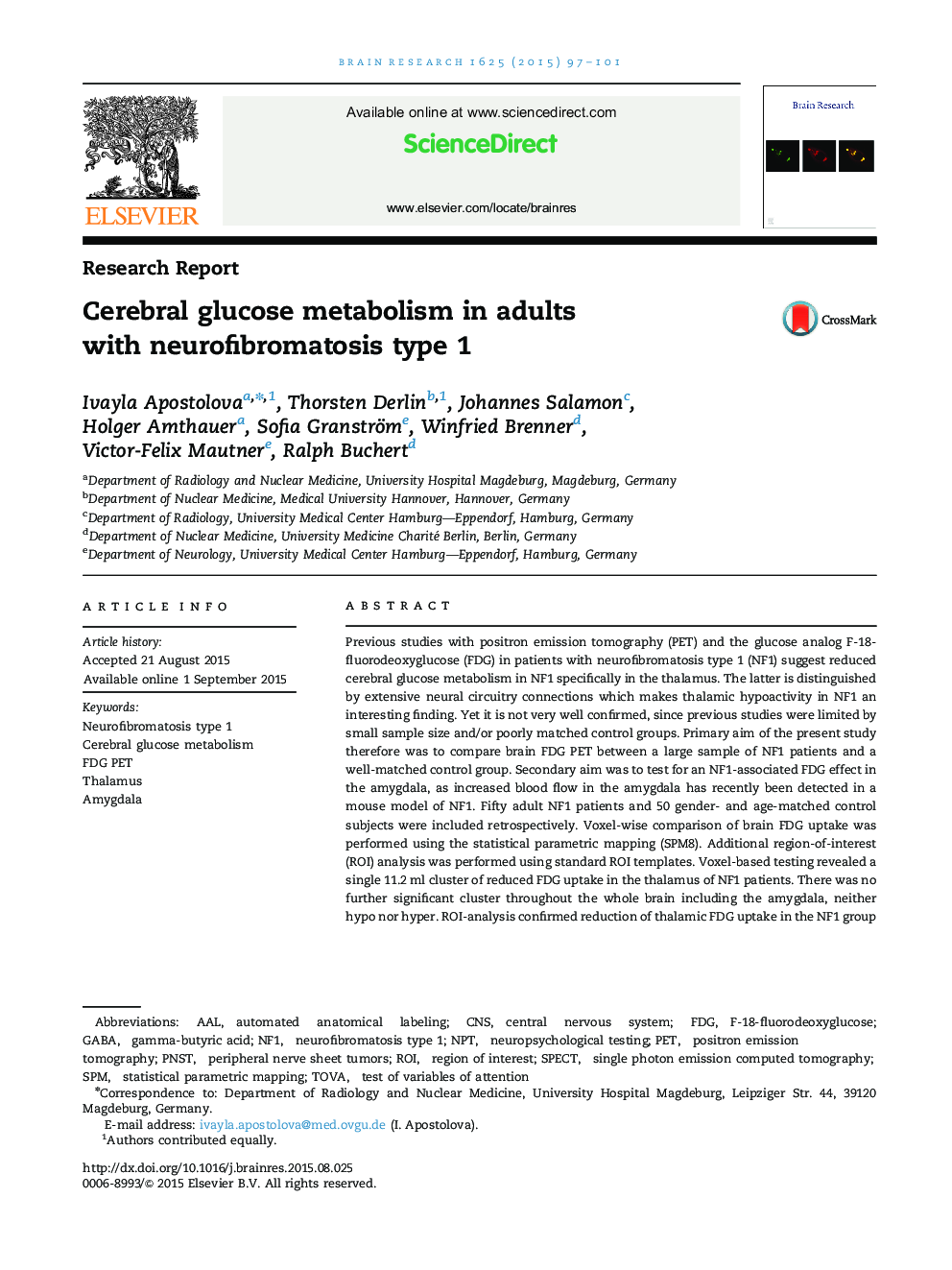| کد مقاله | کد نشریه | سال انتشار | مقاله انگلیسی | نسخه تمام متن |
|---|---|---|---|---|
| 6262856 | 1613814 | 2015 | 5 صفحه PDF | دانلود رایگان |
- Large sample of neurofibromatosis type 1 (NF1) patients with brain FDG PET.
- Adults with NF1 show reduced FDG retention specifically in thalamus.
- FDG retention in the amygdala is normal in NF1 patients in contrast to NF1 mice.
Previous studies with positron emission tomography (PET) and the glucose analog F-18-fluorodeoxyglucose (FDG) in patients with neurofibromatosis type 1 (NF1) suggest reduced cerebral glucose metabolism in NF1 specifically in the thalamus. The latter is distinguished by extensive neural circuitry connections which makes thalamic hypoactivity in NF1 an interesting finding. Yet it is not very well confirmed, since previous studies were limited by small sample size and/or poorly matched control groups. Primary aim of the present study therefore was to compare brain FDG PET between a large sample of NF1 patients and a well-matched control group. Secondary aim was to test for an NF1-associated FDG effect in the amygdala, as increased blood flow in the amygdala has recently been detected in a mouse model of NF1. Fifty adult NF1 patients and 50 gender- and age-matched control subjects were included retrospectively. Voxel-wise comparison of brain FDG uptake was performed using the statistical parametric mapping (SPM8). Additional region-of-interest (ROI) analysis was performed using standard ROI templates. Voxel-based testing revealed a single 11.2Â ml cluster of reduced FDG uptake in the thalamus of NF1 patients. There was no further significant cluster throughout the whole brain including the amygdala, neither hypo nor hyper. ROI-analysis confirmed reduction of thalamic FDG uptake in the NF1 group (p<0.0005) with a magnitude of 7.6%. In conclusion, adults with NF1 show reduced brain activity specifically in thalamus. There is no indication of abnormal brain activity in the amygdala in humans with NF1.
194
Journal: Brain Research - Volume 1625, 2 November 2015, Pages 97-101
